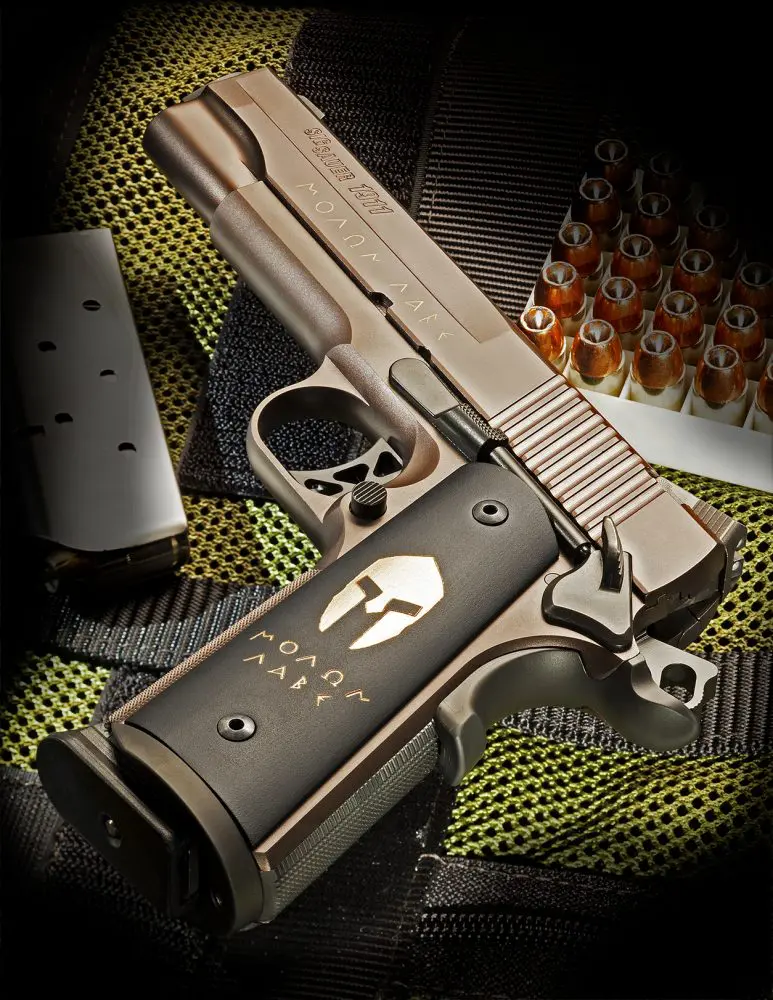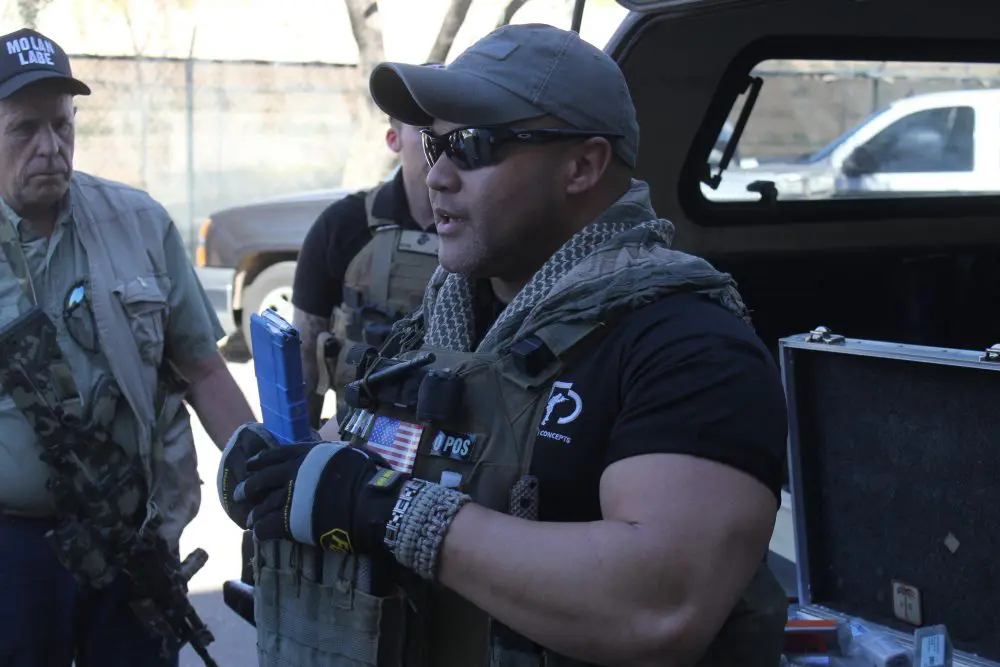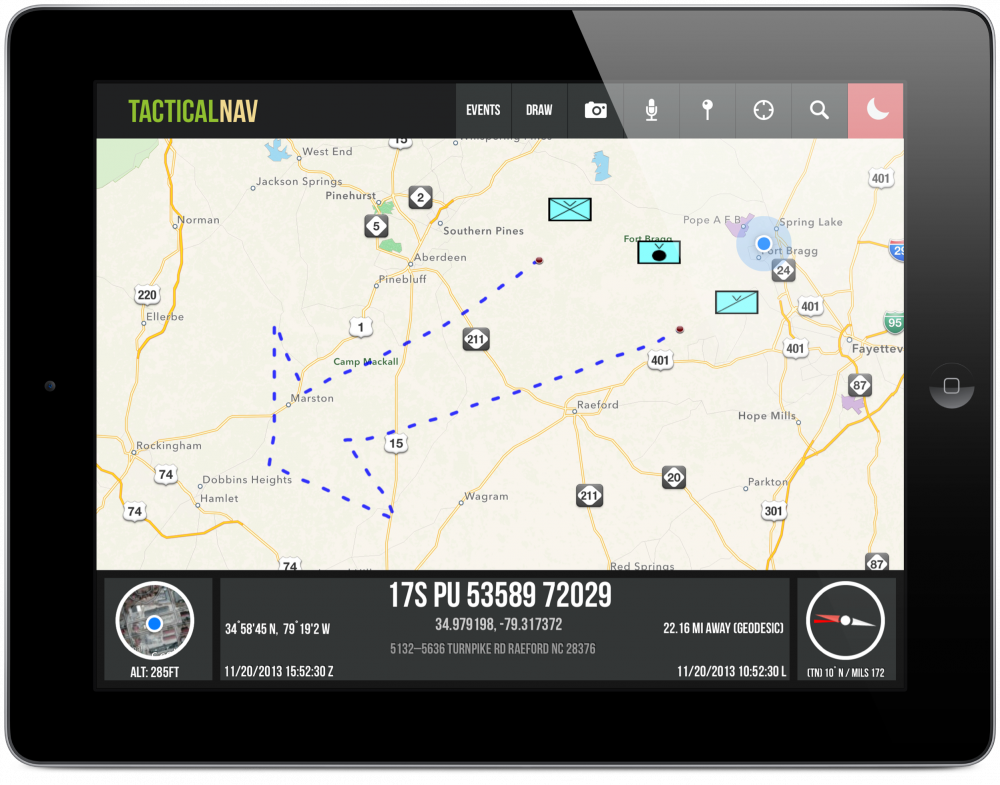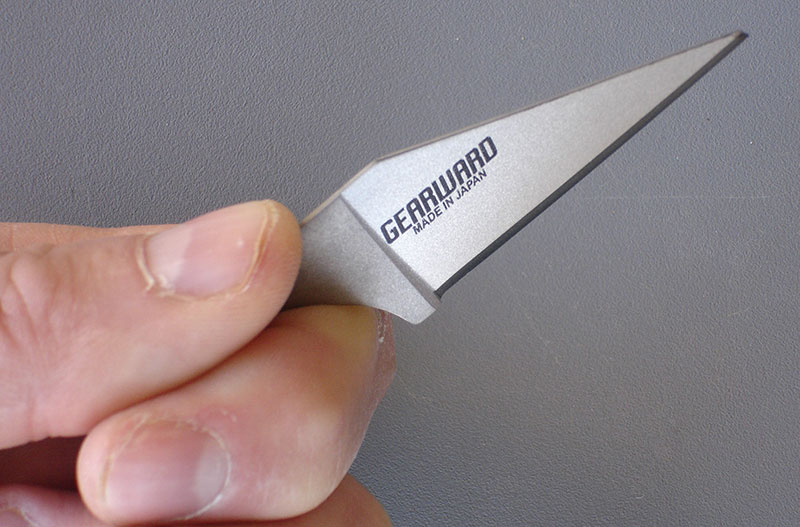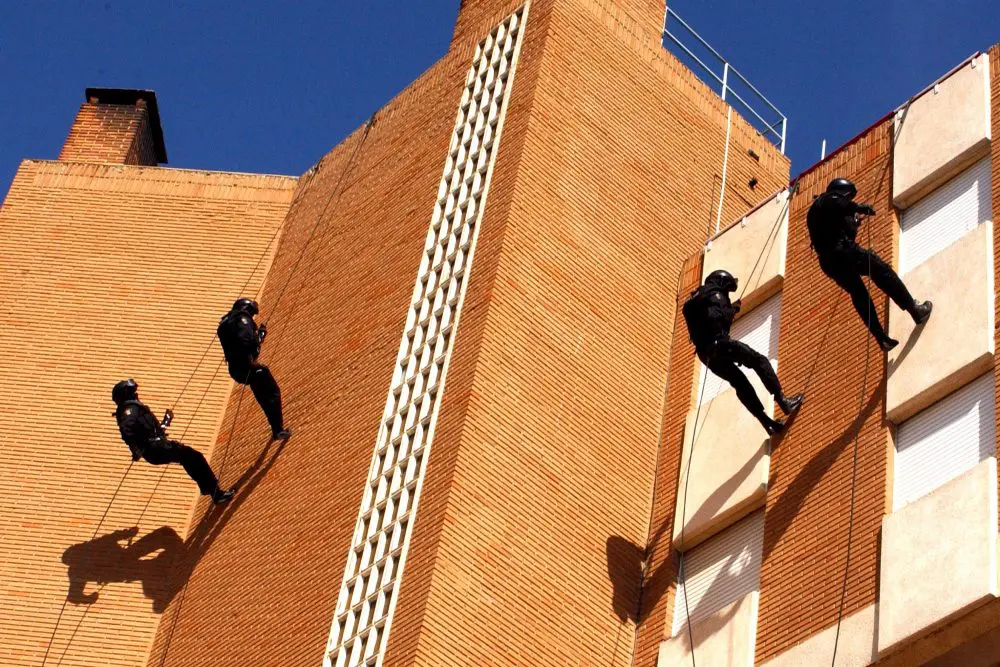A book could be written about the skills, tactics, and decision-making processes necessary to successfully drive out of a kill zone. This article will concentrate on what has become one the most important skill sets needed to escape a vehicle ambush—the combination of reversing out of the kill zone and returning fire.
When shooting across the car it is important to stay back a couple of feet to avoid incoming ricochets off the hood.
Before getting into the specifics, let’s cover some basics:
- History says you will have to survive the initial fire and have the capability to drive off the X.
- Getting off the X means driving out of the range of the enemy’s weapons or going where bullets can’t find you.
- Decisions about who does what and when need to be made before an incident happens.
- Surviving the initial fire depends on whether you are in an armored or a non-armored vehicle. If you are in an unarmored vehicle and bad things happen your chances of survival are not good. The advantage of an armored car is that it buys you time—you have to do something with the time.

In most vehicle ambushes the definition of “do something” is escaping to the rear, which requires the driver (or drivers if more than one car) to back up as fast as possible. Backing up fast is not a skill taught in most driver training programs. It is a hard skill to master, it is sensitive to vehicle design and if not done correctly can get you into more trouble than you were originally in. With that said, reversing out with the team laying down fire is by far one of the most valuable skills to have in a high risk environment.
Do not equate driving in reverse to driving forward—when you are in reverse you are essentially driving a different vehicle. The reason is that automobile suspensions possess a quality known as “caster.” Caster is the force that helps to straighten out the front wheels after turning a corner. Caster gives the car stability while traveling forward. Unfortunately, this stabilizing forward force destabilizes the car while it’s in reverse. Because of the caster effect, small changes in steering wheel movement cause big changes in the way the car reacts to your inputs. The faster you go in reverse, the more difficult control becomes. There is nothing you can do about caster. You need to understand that it’s there, live with it and learn to control it.
When driving in reverse, the steering wheel will not center automatically. If you loosen your grip, the wheel will stay in its last position until you move it. This is a characteristic of “vehicles in reverse” that creates an unstable vehicle and shooting platform.
Adding to the excitement of driving in reverse is that the correct direction to move the steering wheel can be confusing. The correct way to move the wheel is really quite simple. Move the top of the steering wheel in the direction you wish the car to move. It’s actually no different from what you do while driving forward; it just feels different in reverse.
Since the driver should be piloting the vehicle, the shooter directly behind him has the largest area to cover of anyone in the car.
Here is the scenario: things have gone bad and the decision has been made to reverse out of the kill zone.
First and foremost, put as much distance as you can between you and them. One single thought needs to be foremost in your mind—back up as fast as you can, as straight as you can, for as far as you can. The quicker you get yourself going backwards the better off you are. If we use 30 miles-per-hour (mph) as an average back-up speed (that’s fast in reverse) every second is forty-five feet of distance you put between you and them. In three seconds you will be 135 feet away from the problem. If you sit there for a second and a half contemplating your navel, you have given up about sixty-eight feet of distance.
No caption. Since 4 and 5 are so similar and 5 shows both guys on the guns I would rather use that one. If you want both I will caption it.
It was mentioned earlier that while driving in reverse if you loosen your grip on the wheel it stays in its last position—if you want to move the wheel you have to move it. A hint: with the front wheels pointed straight, put a piece of tape on the top of the steering wheel. If you start to lose control it will tell you where straight ahead is. If you look at an in-car camera shot of a NASCAR car you will see tape on the top of the steering wheel for that purpose.
If you have to back up around obstacles, never combine a great deal of steering wheel movement with a heavy foot on the gas pedal. The faster you travel in reverse the more sensitive the steering becomes, and the greater the chance for disaster. If you have to drive around an obstacle in reverse and you are in the fast mode, decrease your speed before turning the wheel. While driving fast in reverse you can flip a car in a heartbeat (the authors speak from experience).
The G-forces that can be felt in a car on some maneuvers are more than enough to throw off your aim. Safety discipline is critical.
Even if there is an opportunity to turn in a short distance, don’t. Continue to put as much distance as possible between you and the enemy before you turn the vehicle. If you are in their range, you do not want to expose the side of the vehicle to the enemy. Attempting to turn around while still on the X will cause bad things to happen.
Once off the X you will have to turn the vehicle 180 degrees and drive off into the sunset. For decades the preferred method of turning 180 degrees while in reverse has been “J turns.” J turns have their place in security driving, but driving in a high risk environment on a narrow road covered with potholes is not that place. Also, doing a J turn with a bunch of folks with weapons along side and behind you can be a life altering experience. There is a world of difference between doing a J turn on a race track or airstrip in a Crown Vic and doing them in an SUV, armored or not armored, on a narrow road covered with potholes.
If you can’t do J Turns how do you turn around?
Optical sights like the EOTech aid immensely in shooting from a moving vehicle.
The basic theory of turning around has been taught at police academies for years, it is called the three-point turn. But the police version of the three-point turn needs to be modified to work in a high risk environment. The standard three-point turn requires the driver to drive forward, then back up, which means you are driving back into the kill zone. Not a good thing.
As mentioned above (and worth mentioning again), with the front tires pointed straight, back up as fast and as far as you can (remember the hint about the tape on top of the steering wheel). Since it’s likely you won’t be able to see out the back window, use your side mirrors. If you have never backed up using your side mirrors, I would suggest you practice. The first time you back up using your side mirrors should not be when lives are at stake—find some safe place and practice, slowly.
When you feel it is safe to turn around (you are off the X) slow down and move the steering wheel a little. The initial movement of the steering wheel is critical as it can create a huge problem. The faster you are moving the more sensitive the steering gets, and small inputs to steering will create big movements in the vehicle, which in turn produce loss of control. The driver must communicate to the team that he is about to turn the vehicle. If possible, always turn towards the driver’s side—the reason is simple, you can see much better.
It may seem trivial, but we suggest you practice moving the gear lever from drive to reverse and reverse to drive without looking at the lever. I would bet that in the vehicle you drive everyday when you put the lever into reverse, you look. If you take one second to look at the lever, at thirty mph you have given up forty-five feet.
What else is happening in the car?
The back seat of a full-size sedan or SUV quickly gets full with two operators sitting back to back covering their respective fields of fire.
At some point during the attack, everyone in the car with the exception of the driver should be doing something. What is that something? Well, first and foremost they need to be communicating with their command center (and other vehicles in the convoy, if applicable) about the attack. Each person in the car should know the direction, description and distance from which the attack came. This is done by simply yelling “AMBUSH FRONT!”, “AMBUSH RIGHT!” etc. This is possibly the most overlooked aspect of the communication process. Always remember: communication is the most critical aspect of a tactical operation and it is the most fragile as well. Communication is the first thing that breaks down.
After the threats are identified, shooting back might be a good idea if your vehicle platform allows it. Shooting from moving vehicles has its own unique set of issues. Shooting accurately is hard enough. Add shooting from a moving object at a moving object and you begin to understand some of Newton’s laws of physics on a more practical level. Certainly, in some places you will be liable for every round that misses your target. In an ambush, misses are not stopping your attackers, and that is a liability.
We do a lot of shooting from moving vehicles at Tactical Response. We have found out some things that work well and other things that don’t work at all. The best hit ratio we seem to get from our top students is about fifty percent. To the uninitiated that doesn’t sound so good. For those who have tried shooting from vehicles they always ask, “How?”
The first thing to consider is the environmental factors. While the driver is up there working his magic you are getting bumped, pushed, smashed, bounced and banged all around. Add to that the G-forces pulling and pushing on you as the car brakes, turns and accelerates—and that’s if you are on a smooth roadway with no potholes. Don’t even think about off-road, nighttime, bad weather or weapon malfunctions. Are you beginning to understand why fifty percent isn’t too shabby?
The second thing to consider is the shooter. Most shooters haven’t shot much from moving vehicles and simply doing it disorients them. Like anything else, your abilities can be improved with training and practice. It is important to shoot from a variety of positions such as seated in the right front seat, right rear and left rear. Also, if the vehicle is an SUV type remember to train as the “rear gunner” facing straight back.
The third and final factor is the weapon system. Since this article is limited we will concentrate on the ubiquitous M4. Let’s say you have thirty rounds in the gun and you are aiming your rounds instead of spraying them on full-auto and you shoot one round every quarter second. That rate allows you to deliver accurate fire for only 7.5 seconds. Not much time, huh?
Time is what getting off the X is all about—putting as much distance and rounds between you and them as possible. At an average speed of thirty mph, and using an M4, in a little over four seconds you would be around 200 feet from them with a lot of rounds headed towards your attackers—and that can be the difference between survival and death.
[About the authors: For the past four decades Tony Scotti has been conducting training programs in the high risk areas of the world. He has conducted programs in over 30 countries. He holds a B.S. in Engineering and was a consultant to Mercedes Benz Armored Car Division. James Yeager (www.TacticalResponse.com) is a police officer and former PSD (Personal Security Detail) Operator. They are working together providing High Risk Driving Instruction.]







